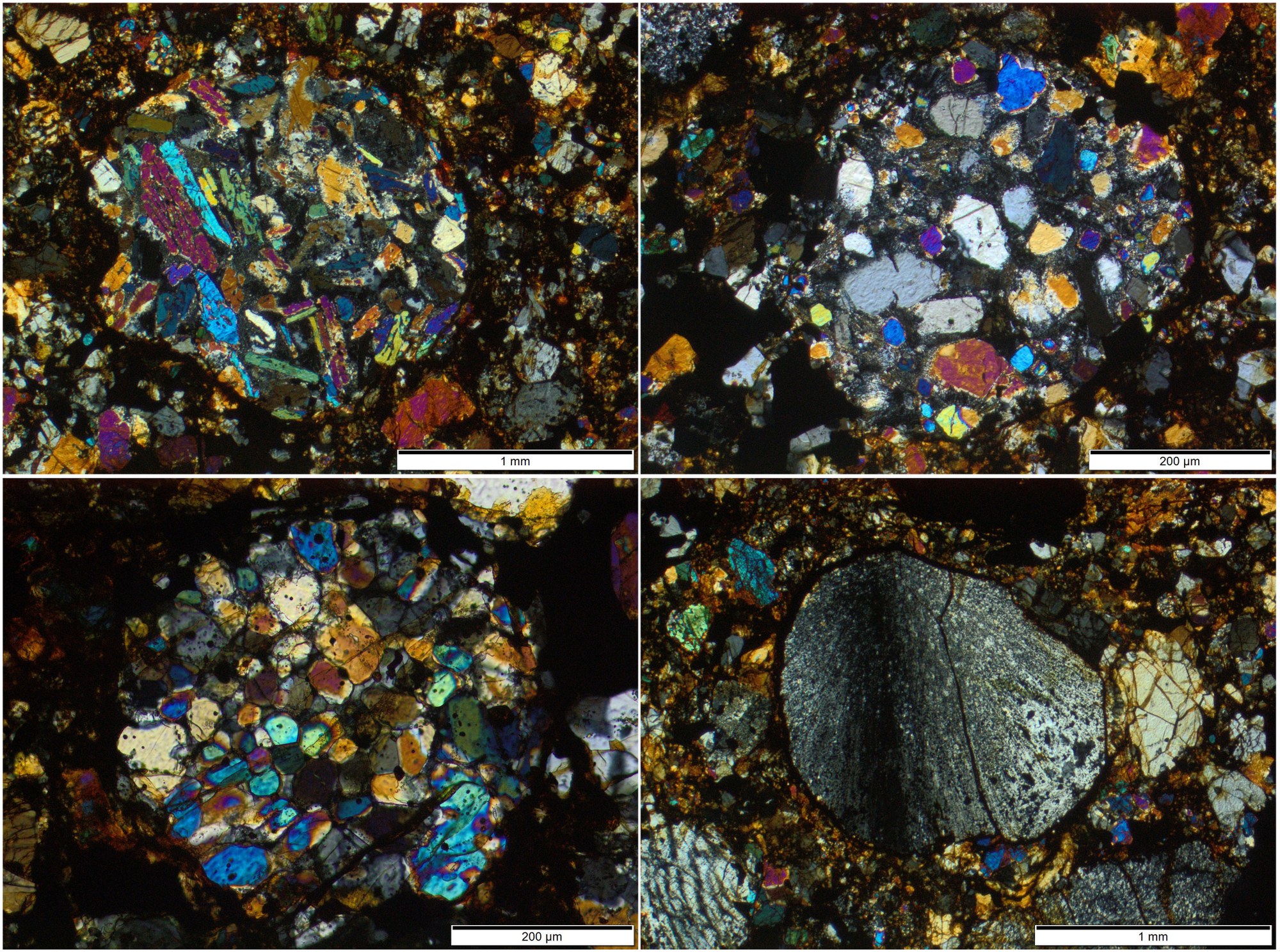Thin sections of ‘Blaubeuren’ under a polarisation microscope
Thin sections of ‘Blaubeuren’ under a polarisation microscope
The meteorite ‘Blaubeuren” comes under the classification of stony meteorites, in the class H4-5 chondritic breccia. When examining wafer-thin, light-transmitting rock samples, usually 25 micrometres (thousandths of a millimetre) thick, and using polarised light, the constituent minerals can be identified by their characteristic colours and outlines. ‘Blaubeuren’ contains numerous crystallised melt droplets with rounded outlines – chondrules. This image shows three grain-shaped olivine chondrules, more strip-shaped pyroxene-bearing porphyritic chondrules and a radial pyroxene chondrule (bottom right). Olivine and pyroxene – aluminium-containing silicates with high proportions of iron and magnesium – are typical, widespread constituent minerals in igneous rocks. These are polarisation microscope images produced using crossed polarisers.

